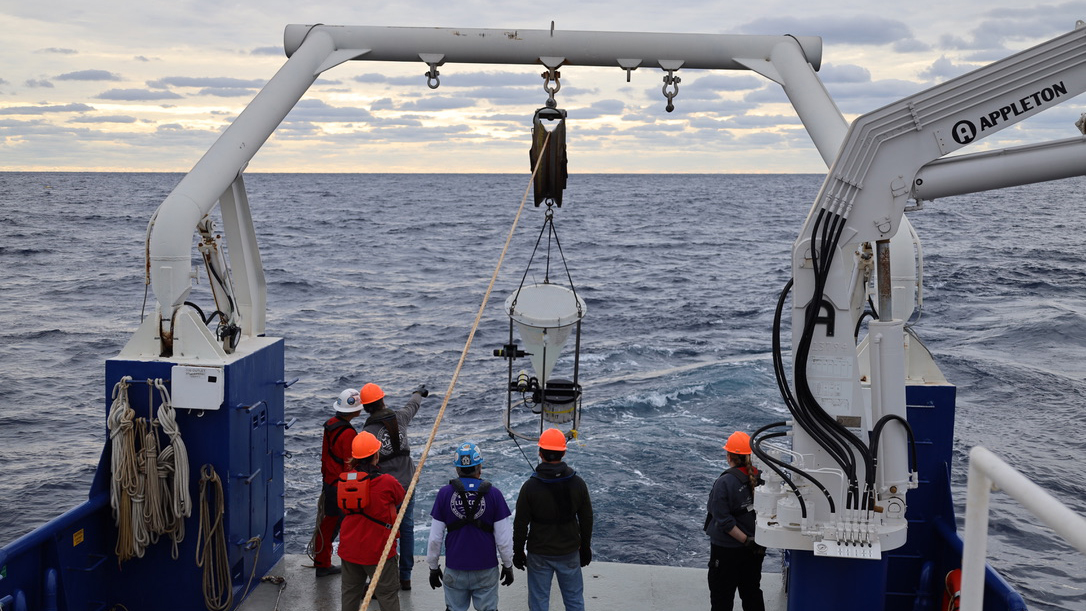On the evening of November 29th, the 116-foot R/V Pelican left the docks of Cocodrie, LA with a team of scientists from AOML, the U.S. Geological Survey (USGS), and the University of South Carolina for the open Gulf of Mexico. Traversing 100 nautical miles of dark ocean with only the lights of stars and deep-sea oil rigs in all directions, the research vessel made its way back to a moored sediment trap located hundreds of meters below the surface.
At sunrise the next morning, an acoustic pulse sent from a transducer dangled from ship’s starboard-side relays a signal towards the ocean floor that sends the trap, tethered to a giant balloon-like buoy, skyrocketing to the surface. Over the next several months, the team will process and examine the flurry of microscopic shells and environmental DNA (eDNA) of biological debris collected by the trap, known as “marine snow.” This collaborative NOAA–USGS research project uses these sediment trap samples to investigate the biological carbon pump, the ocean’s role in removing atmospheric carbon, and paleoclimatology.
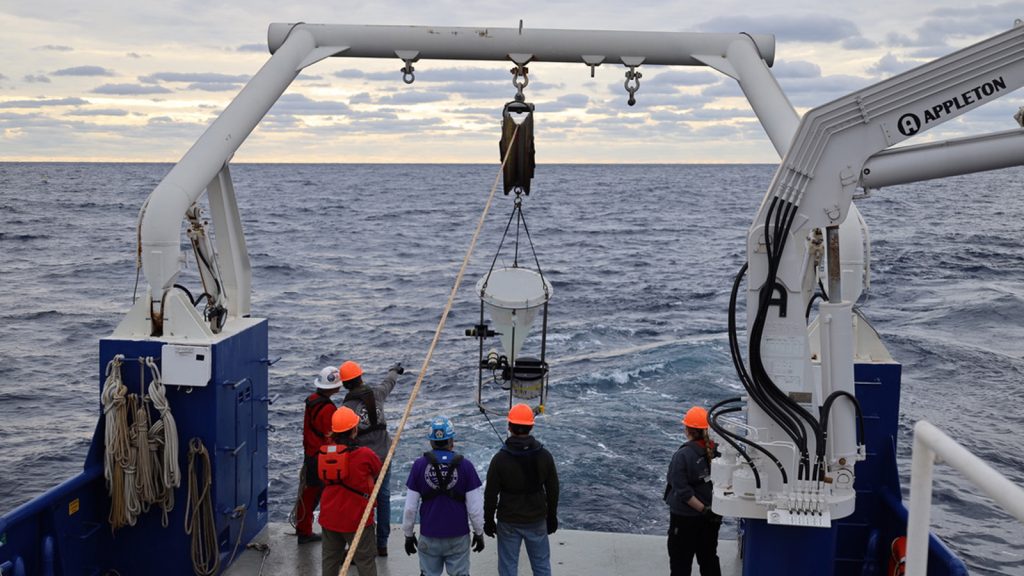
Scientists and R/V Pelican crew members recover the second of two sediment traps from a depth of 600 meters from the sea surface.
As the dominant means of transforming carbon in the surface ocean and transporting it for long-term storage in the deep ocean globally, the biological carbon pump plays a critical role in global carbon cycling. Estimates suggest that atmospheric carbon levels would be as much as 50% greater in the present-day without this ocean “carbon pump”. Large gaps in our understanding of the biological carbon pump, how it fluctuates, and the potential impacts of climate change stem from the challenges to observe the complexities that make up this global-scale process, driven largely by microscopic plankton.
“We’re focusing on what drives particulate carbon to be transported to the deep sea and we’re doing that, in part, by exploring what particles are biologically made up of,” says Emily Osborne, Ph.D., AOML Scientist and a principal investigator on the NOAA-USGS Sediment Trap Project.
Carbon dissolved in the ocean (partially made up of anthropogenic carbon) is transformed into particulate organic carbon (POC) by vast swaths of phytoplankton that photosynthesize within the sunlit surface of the ocean. From the sea surface, phytoplankton-fixed carbon slowly sinks to the deep ocean (called marine snow), where it is transformed, repackaged, and broken down along the way. Only a small fraction ultimately makes it to the seafloor where carbon can be sequestered over geologic time-scales. The sediment trap intercepts the marine snow on this journey, enabling researchers to study ocean particles.
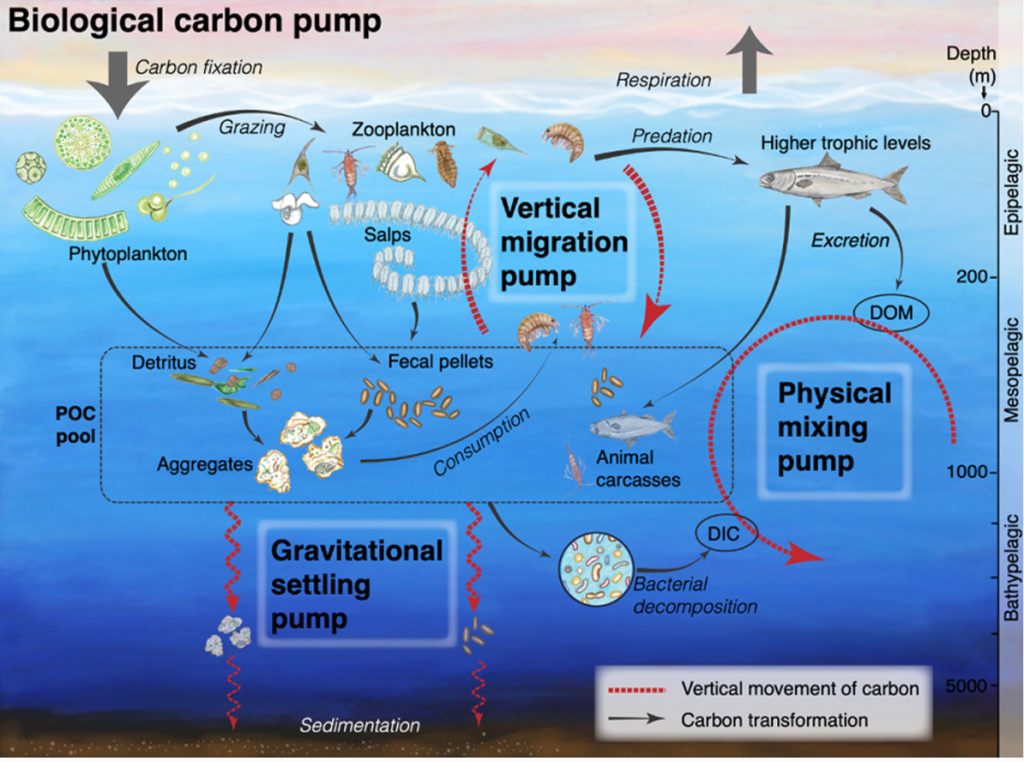
A project initially started in 2008 by the USGS, AOML scientists Emily Osborne, Ph.D. and Luke Thompson, Ph.D. began collaborating with the USGS in 2021 to employ the quickly emerging field of ‘Omics and analyze eDNA, the DNA of whole or partial marine organisms or their traces, in the water column. By analyzing the eDNA both from samples collected by the trap and water samples collected using a CTD in the waters above, the team gets a sense of the microbial community throughout the water column and determines more specifically what organisms are exporting carbon as they sink.
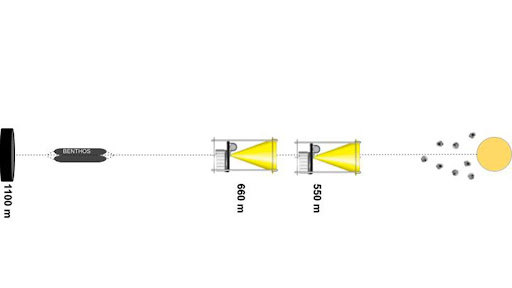
“The sediment trap eDNA tells us which organisms are sinking to the deep ocean, month by month, and the surface water eDNA tells us what’s at the surface, and from those two pieces we can identify which organisms are being exported,” says AOML Scientist Luke Thompson.
USGS researchers are particularly interested in a group of organisms captured extensively by the trap, planktonic foraminifera. By examining the fossilized, microscopic shells of these organisms preserved in the traps and on the seafloor, scientists at USGS and AOML are unlocking vast amounts of crucial information in ocean chemistry and biogeochemical cycling. From changes in salinity and temperature to other parameters, the team is able to use the geochemistry of these microorganisms to go back and examine climate change patterns throughout time.
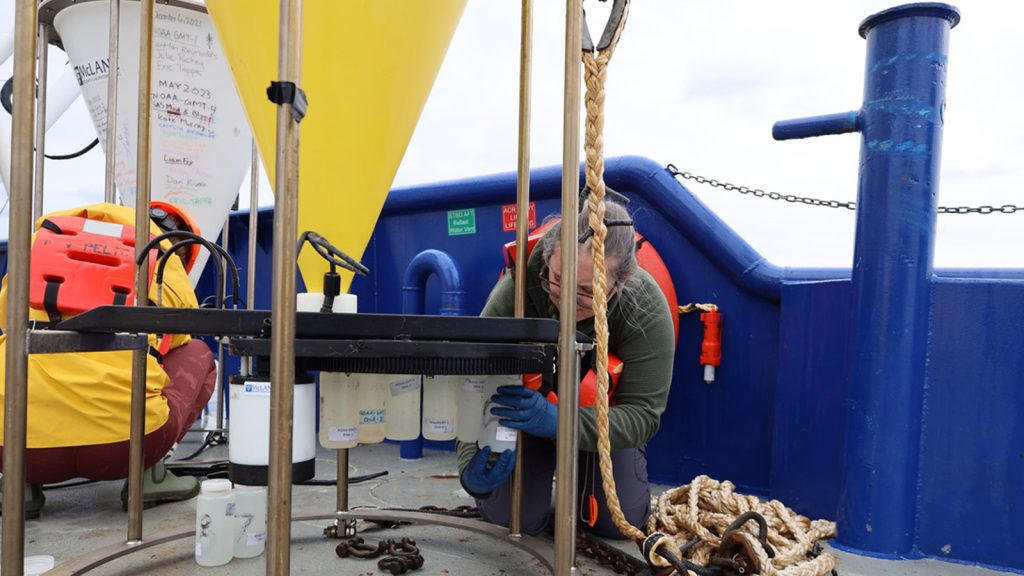
AOML ‘Omics Technician and Ph.D. Student Emma Graves resets the traps’ sampling bottles as the team prepares for redeployment.
Twice a year, the team returns to the Gulf to recover the trap, collect samples, perform repairs and redeploy the complex array to the depths at marked coordinates – all within a matter of hours. At AOML, scientists are also integrating the findings of the sediment trap deployed to the deep ocean with the observations of a series of free drifting Biogeochemical-Argo floats within the upper 2,000 meters of the water column to further quantify the signals of the biological pump from the surface to the seafloor across the entire Gulf of Mexico basin. The continued efforts of scientists across agencies and academic institutions push boundaries to explore how the biological carbon pump fluctuates within the Gulf of Mexico and ultimately the cycling of atmospheric carbon, performing cutting-edge research hundreds of meters below the surface.
